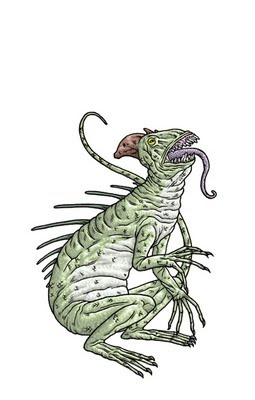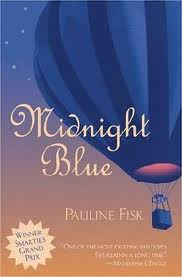
The Boy at the End of the World, by Greg van Eekhout (Bloomsbury, 2011, middle grade, 224 pages), begins thus:
"This is what he knew.
His name was Fisher.
The world was dangerous.
He was alone.
And that was all."
Fisher, born from a pod full of bubbling gel, comes to consciousness in a future world where he is the only living human. The pods around him, full of other people who should have been awakened when the world was ready to be populated again, have been destroyed. He is not entirely alone, however--one maintenance robot, programed to help humanity "continue existing," survived the mysterious catastrophe that struck the ark where Fisher had been preserved. And thanks to the robot, Fisher learns that there was a southern ark prepared as well...one that might still have its people inside it.
The only problem, in Fisher's mind, is how to get to it. He doesn't know that the journey will be easy, compared to surviving what they find there....
Fisher has been programed to be, well, a fisher (the robot who woke him had to make a quick choice of skill sets for him). So he knows all about fish and how to catch them, which is certainly useful when you're headed south down a river in the post-apocalyptic United States with only a maintenance robot (and a random pygmy mammoth) for company. It's enough to keep him alive, barely. Much of the story is, in fact, concerned with the mechanics of survival in the wilderness (after writing this, I went back and read
Betsy's thoughts over at Fuse #8--we are in agreement that there is a
Hatchet-like vibe to this one).
This being Greg van Eekhout (author of the bizarre but entertaining
Kid vs Squid), and this being a post-human world in which evolution has merrily gone on its wondrous way, Fisher encounters strange creatures on his journey. Some, like the giant killer parrots, are fascinating and easy to accept. One of them, the young pygmy mammoth mentioned above, becomes a companion (although I'm not quite sure why....)
But there are also creatures who are rather, um, strange? surreal? in a what the heck, am I going to be able to swallow their presence in the story? kind of way (creatures that Gary Paulson would never put into a story). I shall say no more. You must meet them, and judge for yourself--for me, their presence changed the whole flavor of the story. Like biting through the chocolate (bleak post-apocalyptic journey) and hitting the cherry (bizarre encounter that suddenly fills the book with new characters and ends up being tremendously important).
Fisher's a protagonist one can empathize with--he has no character at the beginning of the story, being just born, with no memories, but as he journeys, he makes for himself a story of determination and loneliness that carries the reader along. The robot fills the role of "side-kick to hero" as best as an over-protective maintenance robot can; the pygmy mammoth provides a dash of comic relief.
The "child in strange new world with robot companion" story is reminiscent of Tony DiTerlizzi recent book,
The Search for WondLa. But the two are very different in feel--Wondla is less bleak (not being as grimly focused on survival), and rather more full of diverting characters for the main character to journey with. This is not to say that
The Boy at the End of the World is depressing--the reader, like Fisher, is tense and anxious, and full of apprehension and curiosity as to where the journey will lead, but in true Adventure Story fashion, perils are overcome and hope continues.
Highly recommended for the 10 to 12 year old looking for a book that is full of mystery and excitement; for the young reader who might be impatient with Magic but who wants a book to spark his or her imagination. The intrepid 9 year old, even, might enjoy it--there are some toe-curling bits of horrifying Squirm, and tense bits of imminent death, but not so as to be unrelentingly Dark. That being said, there's enough thoughtful weight to the writing to make this one teens might enjoy too.
The Boy at the End of the World will be released June 21. As well as Betsy's review linked to above, others can be found at
Suburban (in)Sanity and
Buxton's Fantasy Novels.
Edited to add: when reading this, I missed the descriptive bits that mark Fisher as a kid of color. Here's
Greg van Eekhout talking about his character: "When I look at Fisher on the cover, I see someone who could have been me when I was twelve. As a brown, multiracial person, I’m really happy about that."
Disclaimer: review copy received from the publisher.
 For Poetry Friday, and also for Tidy Up Loose Books Day (which we actually celebrate every day in our house), I offer Mother Goose Picture Puzzles, by Will Hillenbrand (Marshall Cavendish, 2011, 40 pp).
For Poetry Friday, and also for Tidy Up Loose Books Day (which we actually celebrate every day in our house), I offer Mother Goose Picture Puzzles, by Will Hillenbrand (Marshall Cavendish, 2011, 40 pp).







 YAKITH LIZARD
YAKITH LIZARD

























